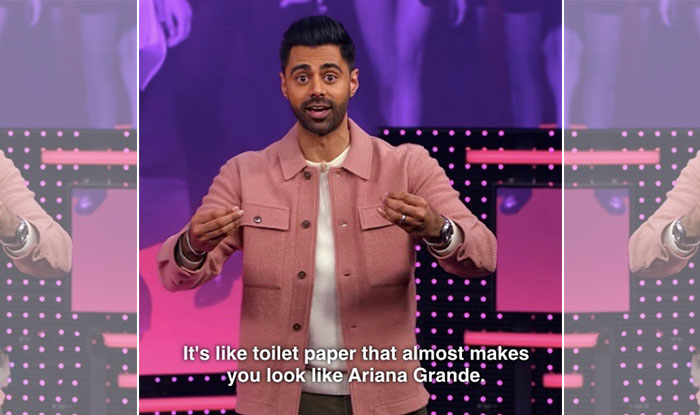In the latest episode of “Patriot Act,” Hasan Minhaj discusses the negative consequences of fast fashion. We are all guilty of checking out the tagged pictures of trendy outfits and quickly adding that to our Zara or H&M carts. But, what we are not quite aware of is the fact that keeping up with the trend is actually costing us the planet.
Minhaj points out that in the 1980s, the average American bought about 12 new articles of clothing every year. Today, the number is somewhere around 64-68 new pieces a year. And, get this: half of which are worn 3 times or less. All thanks to ‘fast fashion.’ What, then, exactly is fast fashion?
[Read Related: Hasan Minhaj’s ‘Patriot Act’ Stands at the Intersection of Representation and Competency]
View this post on Instagram
Fast fashion “is fashion.” Companies such as Zara and H&M (yes, him talking about Zara killed me a bit) combine two techniques: quick response manufacturing and dynamic assortment. In simpler terms, these companies are delivering knock-off designs of brands QUICKLY. And by quickly, it means that they keep the raw materials handy and streamline distribution. As opposed to the standard fashion calendar, which is typically Fall-Winter and Spring-Summer, the ‘fast fashion’ companies deliver new garments almost DAILY.
Trust me, my jaw dropped when I heard how H&M has 52 seasons a year and has something new coming in every day. Ah! So this is why I end up surfing Zara’s website almost every weekend and see new items in stock and think, “OMG this is exactly like the Gucci sweater, how is it so cheap? Should I buy it now or wait until something better comes in stock next week? Nah, let me get it before it sells out.” Unfortunately, this is called the “see-now-buy-now” model of fast-fashion brands. Is it legal for them to copy such authentic brand designs? Yes, because it resembles the design, it is not a direct copy. Look closely.
View this post on Instagram
Ok, so fast-fashion is allowing us to buy more, more frequently, and helping us keep up with fashion trends. What’s bad about that? Exactly what Minhaj tries to touch base with, in his own style.
How is fast fashion harmful?
Minhaj claims that,
The clothes in your suitcase are screwing up the planet more than the flight you put them on.
Fabric production is what is the key issue. So much is being produced as a result of fast fashion. Minhaj depicts a few scenarios so that we actually GET it. That jacket made up of cotton will look great on the ‘Gram, right? Exactly what Rihanna wore last week and now you can wear it for just 30 bucks? GREAT! The only issue here is that 10,330 liters of drinking water was used to make that. As the tidbit on the show explains, synthetic fabric is worse. Uh oh…about 342 million barrels of oil is used to make synthetics — as Minhaj jokes — those are Lulu-Lemon yoga pants. To be honest, Minhaj’s pop-up shop “H-M” was the highlight of the episode.
I kept my eyes glued as Minhaj showed the international impact of such clothing factories, which by the way do not only endorse child labor but also release toxic chemicals to make such clothing into the rivers. But, I just donated my old clothes to H&M! Oh yeah, but I also got 15 percent off on the purchase that I made right after. What’s the catch? The ‘sustainability’ promise treats clothing as disposables and tricks us into buying more. Clever. The physical impact of fast fashion on the environment is astonishing. It made me question my own shopping habits.
View this post on Instagram
At the end of the episode, fortunately, Minhaj saves us from going on a guilt-trip for loving fast fashion.
It’s okay to love to shop the latest trends, but do so less frequently and try to shop more from thrift shops.
Let’s try and make THAT fashion. That’s do-able, right?
Minhaj even gives us some tips to follow to help make that change:
Wear your clothes nine months longer and help reduce your carbon footprint for the garment by 30 percent.
And,
Buying one used item per year, it could save nearly 6 lbs of CO2 emissions.
You heard the man. Do it for the ‘Gram, but also keep Planet Earth on your mind.





